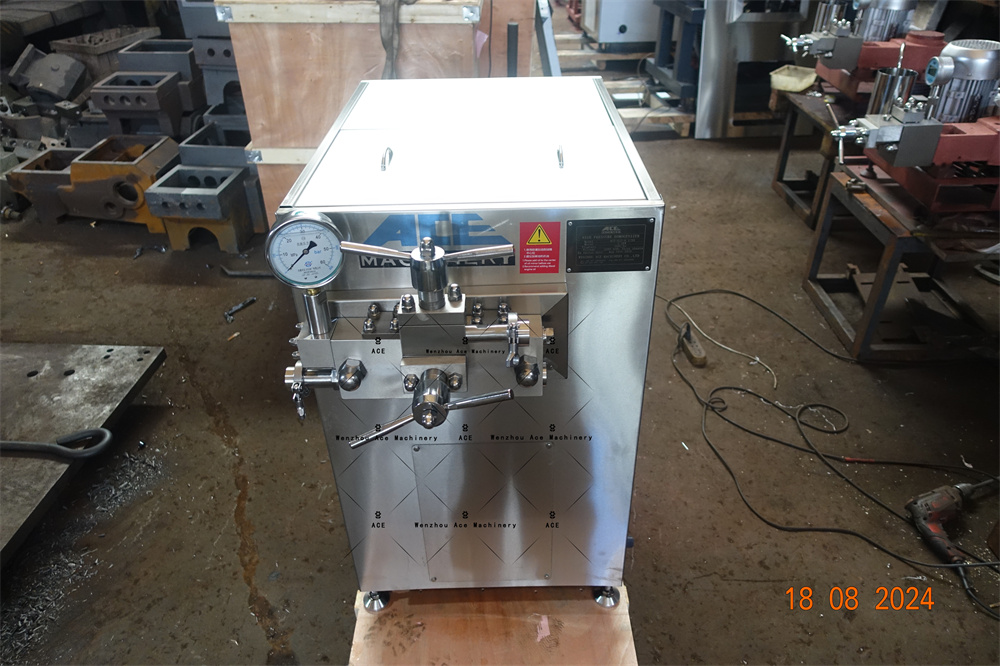Homogenized milk is any milk that has undergone mechanical processing to ensure it has a smooth, uniform consistency. The homogenization process typically involves heating, agitation, and filtration, all aimed at breaking down the naturally occurring fat molecules in milk. Once broken, these molecules remain suspended in the milk and resist separation. This process makes it easier for producers to filter out fat and extend the milk’s shelf life.

The Homogenization Process
In homogenized milk, the fat molecules are reduced in size and dispersed to prevent cream from settling on the surface of the milk.
The process of homogenization involves several key steps:
- Heating: Milk is heated to make the fat molecules more pliable and easier to break down.
- Agitation: The milk is placed in a large vat or barrel that spins at high speed. This agitation creates turbulence that starts breaking down the fat.
- Filtration: The milk is then forced through narrow sieves or filters, which further break down the fat molecules to fit through tiny pores. Modern homogenization techniques can reduce fat molecules by nearly 500 times their original size.
Why Need to Homogenize Milk?
Milk is a mixture of fat, protein, and water. When raw milk sits for a while, the fat molecules usually float to the top, forming a cream layer. Many farmers and raw milk enthusiasts consider this creaminess a quality indicator: the thicker the cream, the better the milk. However, for many people, this separation is inconvenient and can be a barrier to consuming the liquid.
Homogenization allows milk producers to mix cream and milk into a single, cohesive liquid. This process is purely mechanical, involving no additives or chemical treatments. The primary goal of homogenization is to reduce the size of the fat molecules in milk, as smaller molecules tend to remain suspended in the liquid. Only larger globules float to the top.

Historical Background and Early Innovations
The first homogenized milk was produced by August Gaulin of France, who patented a three-piston machine equipped with miniature filtration tubes in 1899. Modern agitation and filtration mechanisms have improved on this model, enabling today’s tools to achieve even smaller fat molecules than Gaulin could have imagined. Despite these advancements, the basic concept remains the same.
Benefits of Homogenization
- Consumer Preference: Homogenization is popular among dairy farmers and producers because it meets consumer preferences for a smooth, consistent product.
- Mixing Efficiency: In larger farms, the process makes it easier to blend milk from different herds. Simply mixing milk from two cows or goats doesn’t always yield a consistent product, as varying chemical compositions can cause separation and flavor differences. Homogenization ensures a uniform product, even from diverse batches.
- Extended Shelf Life: Homogenized milk has a longer shelf life because the cream cannot rise to the top and clump together. This advantage allows it to be transported over greater distances, making it easier for large dairy plants to do business with buyers in various locations. Consumers also appreciate milk that stays fresh longer; once opened, homogenized milk typically lasts a week or more, while separated milk often needs to be consumed within a few days.
- Fat Removal: The filtration part of the process also makes it easier for farmers to remove a certain percentage of fat. In whole milk, all the filtered fat is added back. For 2%, 1%, and skim milk, varying amounts of fat are removed and discarded or used for other purposes, such as making ice cream or butter. Skimming the cream to a measured percentage, combined with homogenization, makes the calculation more efficient and precise.
Homogenization and Pasteurization
Most dairy products sold in U.S. grocery stores are both pasteurized and homogenized. Although these terms are often used together, they represent different processes. In pasteurization, milk is heated to a high temperature and then rapidly cooled to kill microorganisms. Pasteurization often changes the taste of milk, but many people consider it essential for ensuring milk’s safety.
Homogenization, on the other hand, is not related to safety but rather to aesthetics and taste preferences. It is possible to have milk that is homogenized but not pasteurized, or pasteurized but not homogenized. However, when both processes are performed, homogenization usually follows pasteurization, as the high temperatures of pasteurization make the fat easier to break down.
Regulatory Requirements
Governments typically do not mandate milk homogenization, partly because it is a strictly mechanical process. However, milk is so frequently treated this way that some governments have intervened in the labeling process. For example, in the United States, the government’s definition of “milk” assumes it has been homogenized. This means manufacturers do not need to specify that their milk is homogenized unless it deviates from the norm.
Health Considerations and Controversies
Homogenized milk is generally considered safe and has long been thought to be easier to digest than milk with natural cream. However, there are some controversies regarding whether forcing the cream to separate could have adverse health effects.
One challenge facing homogenized milk is the potential link to arterial plaque buildup. Some believe that the smaller, more unstable fat molecules produced by homogenization might more easily adhere to the walls of the heart arteries, potentially leading to blockages and other cardiovascular issues. While this theory has garnered attention, substantial research seems to refute it, and there is not enough evidence to draw a definitive conclusion.
Conclusion
Dairy processing plants are responsible for both pasteurizing and homogenizing milk before bottling it for sale to consumers. Homogenization ensures a smooth texture that meets consumer preferences while increasing shelf life; although the process has undergone numerous advancements over time, its primary goal has remained the same: producing high-quality, consistent products consumers appreciate.






